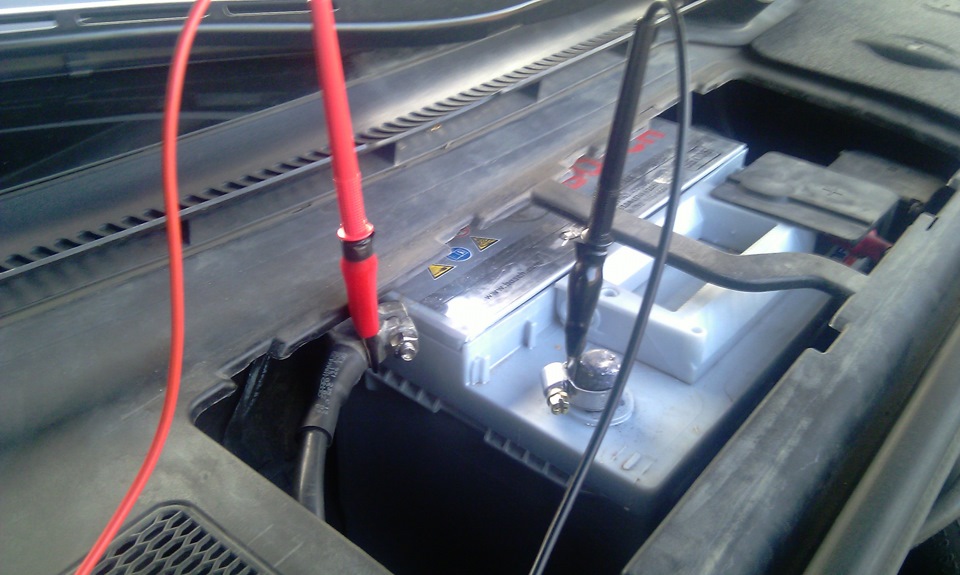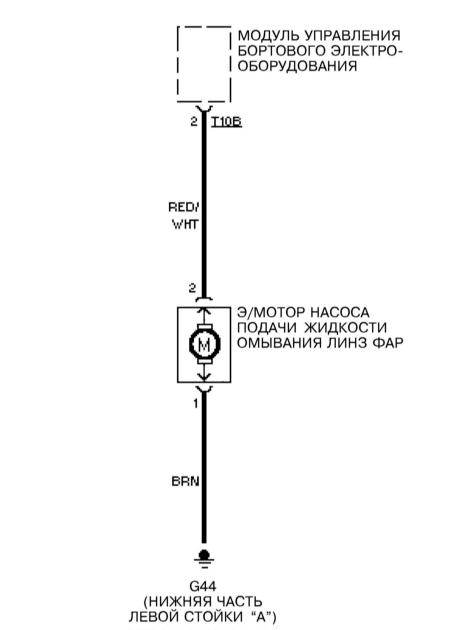Tools:
- Hydrometer
- Voltmeter
- Charger
1 . If the annual mileage of the car is low, the density of the electrolyte should be measured every three months to check the battery charge. Measure the density with a hydrometer.

Hydrometer for measuring electrolyte density.
Note:
If the condition of the battery is of concern, check the density of the electrolyte in each cell. A difference of more than 0.040 indicates a loss of electrolyte or damage to the plates.
If the difference in density exceeds 0.040, the battery must be replaced.
If the difference in density is satisfactory, but the battery is discharged, it must be charged and the density of the electrolyte checked.
2 . If a sealed battery is installed on the vehicle, it is not possible to check the density of the electrolyte and restore its level. Battery status can be checked using the built-in indicator or an external voltmeter.

Voltmeter to check battery condition.
Note:
Some models are equipped with maintenance-free batteries with a built-in charge indicator. It is located on top and changes its color when the battery state of charge changes. If the indicator is green, the battery is fully charged, if the indicator is red, the battery needs to be charged. The sequence of actions when charging the battery is given below in this Section. Batteries from other manufacturers may also have a built-in charge indicator. In this case, follow the instructions given in the operating instructions for the battery.
3 . When checking the battery with an external voltmeter, connect it to the terminals. The measurement result will be correct if the battery has not been charged for at least the last 6 hours. If it was charging, turn on the headlights for 30 seconds, then wait 5 minutes and check the voltage at the terminals. All other electrical equipment (including even interior lighting) must be turned on.
If the measurement result is less than 12.0 V, then the battery is discharged, and the voltage from 12.0 to 12.4 signals a partial discharge.
If the battery needs to be charged, remove it from the vehicle (refer to Battery Replacement ) and charge following the procedure below.

4 . If the battery is loose or the terminals are loose ( arrow ), the result may be premature battery failure due to vibration, cable fire, or electrical malfunction. Since the data of electronic memory units, such as a radio receiver, are erased when the battery is disconnected, read the notes on removing and installing the battery.

5 . Move the battery terminals in different directions and check the reliability of their fastening, tighten if necessary. If the battery is loose, tighten the fastening bolt to 20Nm.
6 . To test the battery under load, attach a voltmeter to the battery terminals.

7 . Start the engine and check the voltage.
Warning:
When starting the engine with a fully charged battery, the voltage should not fall below 10 V (at an electrolyte temperature of about +20°C). If the voltage drops sharply and the density of the electrolyte in different sections is different, the battery is damaged and needs to be replaced.
Note:
The following sequence of actions may differ from that recommended by the manufacturer of the battery installed on the vehicle. In this case, follow the manufacturer's recommendations.
8 . The battery should be charged with a current equal to 10% of the capacity (for example, if the battery capacity is 45 Ah, it should be charged with a current of 4.5 Amperes) until the density of the electrolyte in the banks increases within 4 hours. On the other hand, an automatic charger with a current of about 1.5 amps can be left on all night.

Warning:
Chargers of the "accelerated" type, which supposedly can fully charge the battery in a couple of hours, are not recommended, because at high currents the battery plates can overheat and collapse.
When charging the battery, make sure that the temperature of the electrolyte does not exceed 37.8°C.
9. This type of battery will take longer to fully charge than a low-maintenance or conventional battery. The charging time depends on the degree of discharge and can take up to three days. The voltage generated by the charger should be in the range of 13.9 - 14.9 Volts, the current should not exceed 25 Amps. Under these conditions, the battery can be used after 3 hours, the voltage at the terminals should be about 12.5 volts. It will take longer to reach full charge.
Warning:
Please read the following safety notes before charging the battery:
- Do not disconnect the battery while the engine is running.
- Never short-circuit a battery, i.e. do not connect the positive (+) and negative (-) terminals. The battery will get hot and may crack.
- Do not use open flame near the battery. The electrolyte is toxic. Avoid contact with eyes, skin and clothing. Otherwise, flush the electrolyte with plenty of water.
- For a battery with a central gas outlet, when charging, do not turn out the plugs (cross slot).
- Allow a frozen battery to thaw before charging. A charged battery freezes at about 65°C, a semi-charged battery at about 30°C and a discharged battery at about 12°C. After defrosting, check the battery for cracks. Replace if necessary.
- When charging the battery with a normal charger or fast charger, remove the battery. At a minimum, disconnect the negative (-) and positive (+) cables.
- When using a portable charger (low current), charging can be performed without removing the battery. The cable to the on-board network does not need to be disconnected. It is necessary, of course, to take into account the data of the battery manufacturer.
10 . A battery that has not been used for a long time (for example, when the car is parked for a long time) discharges and sulfates over time. If the open circuit voltage of the battery is below 11.6 V, then the battery is considered to be heavily discharged. In a heavily discharged battery, the electrolyte consists of almost nothing but water. At a negative temperature, such a battery may freeze, and the battery case may crack. A severely discharged battery is sulphated, i.e. large poorly soluble crystals of lead sulfide are formed on the surface of the electrodes. The electrolyte loses its transparency and acquires a faint white color.

Warning:
A heavily discharged and sulfated battery should be charged with a small current (about 5% of its capacity). For example, with a battery capacity of 60 Ah, the charging current should be 3 A.
The charging voltage should be no more than 14.4 V.
Never charge a heavily discharged battery with a fast charger.
11 . Use a fast charger to charge the battery only to start the vehicle. In this case, the charging current is 20% or more of the battery capacity. In this case, the battery is damaged, because it is exposed to high currents. A battery that has not been used for a long time and is badly discharged should not be charged with a quick charger as it will this leads to sulfation.
The article is missing:
- High-quality repair photos
Source: http://carpedia.club/










![B6 [2000 - 2005]](/uploads/Audi_A4_2000-2005_B6_.jpg)
